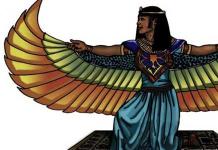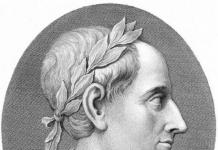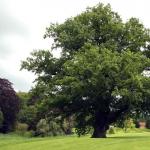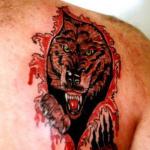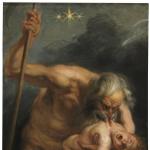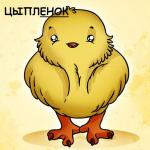The most revered human qualities are: courage, strength, ingenuity, the ability to stand up for oneself and others, courage. Not many people know that each of these qualities completely coincides with the symbolism of plants such as oak and laurel.
Symbols and Notations
The Slavs also believed in the great power of the oak tree. According to pagan beliefs, it was believed that the souls of deceased ancestors lived in the oak crown, contemplating what their descendants were doing.
The ancient Greeks, and later the Romans, identified oak with the gods of fertility, thunder and lightning. This was due to the fact that the tree itself could easily withstand a lightning strike, survive and not burn during a thunderstorm.
During the Olympic Games, laurel and wreaths were awarded to the winners. The oak wreath became a reward for courageous and strong athletes, and the laurel wreath was intended for poets and playwrights.
This division was due to the fact that laurel is a symbol of the eternal, unforgettable. personified peace and victory. Laurel groves grew in large quantities near the temples of Dionysus and Apollo.
Roman commanders and commanders loved to decorate their heads with wreaths of leaves of these plants when returning from campaigns with victory. Later, living branches were replaced by wreaths cast from inexpensive metal or gold, which later became the prototype and main attribute of any monarch).

Strength and courage
The oak wreath and the wood of this tree were very valuable in ancient times. Researchers believe that the staff of Hercules was carved from an oak branch. In addition, the symbolism of the oak tree appears in many legends and myths of various countries.
In Greek myths, an oak tree appears every now and then. Jason removed the golden fleece from an ancient oak tree, and the ship's mast was also made from its wood. The club of Hercules became the prototype of the staff of kings, as well as power, valor and honor.
The oak tree represents masculinity, and its fruits (acorns) represent fertility and wealth. In ancient times, a wreath made of oak leaves was used as a talisman against evil spirits, to strengthen the body and fortitude of a warrior.
Heraldry
The symbolism of the oak tree has allowed the oak wreath to be used for many years as a distinctive sign of military personnel from various countries. It can be seen on the uniforms of the military of the USA, Germany, and Russia.
In America there is a special award in the form of an oak leaf of several degrees. It is awarded to particularly distinguished soldiers for saving civilians. Depending on the number of awards received, the degrees, as well as the metal from which the patch is smelted, vary. The largest number of additional characters received is eleven.

During World War II, Wehrmacht soldiers from special units wore an insignia - an oak wreath. It came as an addition to the oak leaf reward.
The most original insignia can rightfully be considered the special stripes of Luftwaffe soldiers. Their emblem depicted a laurel and oak wreath with an eagle in the middle, where they meant valor, and laurel - glory.
Beliefs and magical rituals
In the past, in Great Britain there was a belief that headaches could be removed with a nail and a hammer. With these things it was necessary to come to the oak tree and hammer a nail into its trunk.
In connection with the solstice, fortune telling was performed. To do this, they took acorns and split them to see their middle. If it was damaged, it promised financial losses.

They made a wreath of oak leaves with their own hands as a talisman for the home. With its help they tried to protect and clean the home. During the main church and folk festivals in the Middle Ages, houses and streets were decorated with garlands and wreaths made of oak, spruce, and holly so that wealth, stability and health would visit them.
In Christianity, an oak wreath, as well as a laurel branch, symbolize eternal life, resurrection and joy. And the very shape of the wreath (a closed circle) means the eternal process of rebirth and cycle in nature, the path from birth to death.
In the countries of the former CIS, as well as Asia, wood, leaves, and even the tree itself were considered a panacea for many diseases. A decoction of oak bark was used to treat toothache, headaches, muscle weakness, and childhood ailments. In addition, parts of the tree were used on the farm to repel snakes.
Oak- a symbol of power and glory. Corresponds to the zodiac sign Leo (Leo is the symbol of the southern countries). Symbolizes fortitude. It is a sign of longevity and even immortality. Oaks are an attribute of monarchical power. Royal oaks grew in the palace parks of a number of European monarchs right up to the bourgeois Jewish revolutions. The rebellious masses cut down the “royal oak”, which symbolized reprisals against the crowned persons.
Abundant harvests of acorns are repeated after 4 – 8 years. Renewal is also carried out by stump growth. Oak lives up to 400 - 500 years, individual trees - up to 1500 - 2000 years. Relatively light-loving, often drowned out by fast-growing trees (birch, aspen and hornbeam).
English dub “to knight, to give a title”, as well as joke. “to baptize”, dub in “to dub”.
The etymology of the word “oak” is Russian. oak, Ukrainian oak, old glory db, bulg. dab, Serbohorv. oak, slovenian dob, Czech, Slvts. dub, Polish dab, gen. n. debu, v.-luzh., n.-luzh. dub. The original meaning is probably " tree"; Wed lab. jabkodab "apple tree". In etymology, apparently, one should proceed from *dombros from *dom-ros, which could have developed in Proto-Slavic as a base on -u under the influence of some other tree name (for example, *dybъ or *grabъ, like *grabrъ by analogy *dobrъ). Less convincingly, Slav comes closer. dobъ with d.-v.-s. tanna "spruce". The comparison with the Greek is unconvincing. “blind, dark”, Irish. dub "black", goth. dumbs “stupid”, from where dobъ allegedly means “dark wood”. *dhumros “dark-colored tree”, Old Indian. dhumras "smoky, gray". From I.-e. *dheub-; Wed Polish dub, dziub "hollow".
Oak bark is mainly used as a medicinal raw material. Galenic preparations of oak bark have astringent, anti-inflammatory and anti-putrefactive properties. When applying galenic preparations of oak or tannin to wounds or mucous membranes, interaction with proteins is observed, and a protective film is formed that protects tissues from local irritation. This slows down the inflammation process and reduces pain. Tannins denature the protoplasmic proteins of pathogenic microorganisms, which leads to a delay in their development or death. The bark of young branches and thin trunks is used as an astringent, for rinsing with gingivitis, stomatitis, inflammatory processes of the pharynx, pharynx, larynx and for the treatment of burns, replacing imported ratania. For tuberculosis, rickets. Infusion - for gastritis and enteritis, stomach ulcers, gastric bleeding, colitis, dysentery, cholera. Lotions - for skin diseases, bedsores, enemas and suppositories - for hemorrhoids and anal fissures, douching - for vaginal diseases and polymenorrhea, baths - for hyperhidrosis. Infusions and decoctions - for frostbite. Antidote for poisoning with alkaloids and salts of heavy metals. The decoction has a pronounced deodorizing effect. In folk medicine (inside) - for gynecological diseases, heavy menstruation, diarrhea, gastric ulcers, dysentery, gastrointestinal diseases, diseases of the liver and spleen, thyroid gland, rickets, cholera, pyelonephritis; externally - for sweating, for washing bleeding hemorrhoids and purulent wounds, gargling and mouthwash for inflammation, to eliminate bad breath, to remove calluses; ointment - for burns and frostbite. Oak bark is included in bath mixtures for scrofula and rickets. Leaves – infusion and decoction for diabetes. Acorns – acorn coffee and dry powder – for colitis, scrofula. Infusion and decoction - for rickets, anemia, nervous diseases, polymenorrhea, scrofulosis, diabetes mellitus.
Oak is one of the most revered trees in the traditional culture of the Slavs, symbolizing strength, strength and masculinity, as well as personifying the object and place of religious rites and sacrifices.
Among the Slavs, oak is associated with the upper world. Positive meanings are assigned to it. The oak occupies the first place in the row of trees and correlates with the first elements of other symbolic rows. The Russians called him Tsar Oak. In Slavic languages and dialects, the word “oak” often appears in the generic meaning of “tree”; for example, the Serbs said that the oak is the king of trees.
In sacred practice, it was the oak that performed a number of cult functions; in folklore and practical magic, the oak acts in the form of a three-part world tree, modeling the Universe. In conspiracies, an oak tree standing on an island, near a temple, on a mountain, in the middle of the ocean, denotes the center of the world and the world itself, and at the same time an ideal otherworldly space, where only the resolution of a particular crisis situation (in particular, getting rid of an illness) is possible. The Slavs held meetings, trials, and wedding ceremonies under the sacred oak trees. For example, in the treatise of Constantine Porphyrogenitus (mid-10th century) it is reported that the Dews made sacrifices on the island. Khortytsia, where a huge oak tree grew. According to information from the Voronezh province, after the wedding, the newlyweds drove to the old oak tree and drove around it three times. It was everywhere forbidden to cut down and damage sacred oak trees.
The Slavs dedicated the oak tree to the thunderer Perun (in particular, it was forbidden to be under an oak tree during a thunderstorm and to grow an oak tree near the house, since thunder strikes the oak tree first).
In signs and prohibitions, the oak was compared with the owner of the house. In conspiracies, the oak was endowed with a proper name (for example, Karkolyst, Dorotheus).
Giant mythological snakes lived on large oak trees - patrons of the land, protecting the area from hail and bad weather and fighting with the challahs. Next to the oak tree or right on it are the king, queen, God, and around the oak tree in its roots or on the leaves lies a snake (cf. also the South Slavic Guardian Snake living on the oak tree). The king of birds, Cook, and an eagle lived on the oak tree. In Belarusian folklore, oak and Perun appear in the plots of fairy tales and conspiracies dedicated to the Thunderer’s pursuit of a snake, falcon and other opponents. Mermaids lived on oak trees: A.S. Pushkin placed the Lukomorye oak tree at the center of the mythological universe, and not its branch - the mermaid.
In beliefs, practical magic and folklore, the oak consistently appears as a male symbol. After bathing a newborn boy, water is poured under an oak tree. In the Vitebsk region, a midwife cut a boy’s umbilical cord on an oak block so that he would grow up strong. When the bride is brought into her husband’s house, she enters first and says to herself: “There are oak trees near the yard, and sons in the house,” if she wants boys to be born to her.
There is an ancient Russian custom of rubbing your back against an oak tree at the first thunder or at the sight of the first spring bird, so that your back is strong; tuck an oak branch into the belt on the back so that the back would not hurt during the harvest, etc. The Poles hung oak wreaths on the horns of cows so that the cows would be strong and so that the horns would not break when gored.
The oak served as an object to which diseases were symbolically transferred (another duplication). Belarusians poured water under a young oak tree in which they washed a consumptive patient. When Poles had abscesses in their mouths, they spat into a hole dug under an oak tree. Ukrainians, Poles, Czechs and Moravians left the clothes of the sick person on the oak tree; Bulgarians, Serbs and Macedonians visited revered oak trees and tied them to their branches ribbons And threads from clothes. In the folk medicine of the Southern Slavs, a popular way of treating childhood illnesses, as well as a way to stop child mortality in the family, was the custom of placing cut nails and hair of a sick child in the trunk of an oak tree or thread, which was used to first measure the child, and then hammer this hole with a peg: when the child outgrows this hole, the disease will leave him.
Among the oak groves, temples of Veles were built (in particular, the temple of Baal in Damascus; see more about the cult of Veles-Baal). The famous club of Hercules was made from oak. The Druids called the oak the “tree of science” (cf. the Judeo-Christian tale about two trees growing in paradise: the tree of life and the tree of knowledge). Not a single tree enjoyed such love and honor among the peoples of Europe as the oak. The Slavs, ancient Greeks, and Romans considered it sacred, worshiped it, and attributed miraculous properties to it. It was believed that the oak was given by the gods to people as a great gift. Without the permission of the priests it was impossible to cut down an oak tree or break off a branch. In Greece, an oak branch was a symbol of strength, power, and nobility. Oak branches were awarded to warriors who accomplished great feats. The uneducated Greeks believed that the oak appeared on earth earlier than other trees. They dedicated the oak tree to God Sveta, sciences and arts to Apollo. On the basis of the mythology of Apollo, a myth arose about the Hyperboreans (Hyperborea - Rus', see) and their country, where morality and art flourished under the sign of Apollo’s mercy (Pind. Pyth. X 29 - 47; Himer. XIV 10; Herodot. IV 32 - 34). As for the arts, it should be said at least that it was in Rus', at the Avdeevskaya site, in the 20th thousand BC. The oldest flute has been found. And in general, the Slavic god Perun is persistently discernible in the image of Apollo. According to the mystery scale of the ancient Egyptian Book of the Dead, oak corresponds to fifth hour of the night journey solar barge Ra.
The Bulgarian legend told how an oak grove hid God, who was fleeing from the Plague. In gratitude for this, God made sure that the leaves from the oak tree fell only in late autumn. This is where the “original” Judeo-Christian tale about Abraham, who lived near the Mamre oak tree, under whose branches the first appearance of God took place, originates. Obviously, this was a Slavic god, since there simply were no other gods living in oak trees. This is also confirmed by the fact that in Judeo-Christian semiotics the oak is a symbol of idolatry, and the Old Testament prophets condemned their fellow tribesmen for “walking under the oak tree,” that is, performing Slavic rites and customs. However, the prophets themselves were buried according to Slavic custom - under oak branches.
Thus, the oak should be considered as a double of the Cosmic Tree, that is, a tree in which all three components of the Cosmic Tree are represented in one, and all the characters of Slavic mythology are also reflected.
In many Indo-European traditions, there was a cult of the oak, which was considered a sacred tree, the home of the gods, the heavenly gate through which a deity could appear before people. Like all trees, the oak acts as a world tree: it symbolizes the world axis, connecting the upper and lower worlds, living beings and deceased ancestors, marking the center of the Universe. Oak meant strength, courage, endurance, longevity, fertility, nobility, and loyalty. This tree was dedicated to the supreme thunder gods: in Greece - Zeus, in Ancient Rome - Jupiter, in Germany - Donar, among the Lithuanians - Perkunas, among the Slavs - Perun.
Oak is symbolically associated with fire and lightning. According to J. Fraser, the ancients believed that “the great god of the sky, the object of their cult, whose terrible voice reached them in the peals of thunder, loved the oak above other forest trees and often descended on it from a thundercloud in the form of lightning, leaving in memory of his visit, a split, charred trunk and burnt foliage. Such trees were surrounded by a halo of glory, since their destruction was seen as the hand of the great Thunderer.” The place where lightning struck became sacred.
Oak groves were a place for rituals, the most important rituals (sacrifices, trials, oaths), and holidays were held in them. The oak club as a weapon of the thunderer or the sun god symbolized the firmness of power and severity. A wreath of oak leaves expressed the idea of strength, power, and dignity.
In Ancient Greece, the center of the sanctuary of Zeus in Dodona was an old oak tree, under which there was a spring. Based on the rustling of the leaves of this oak tree, the priests of the oracle at the temple made predictions. A special winged oak tree was also dedicated to Zeus, over which a blanket with images of the earth, ocean and stars was thrown. The gods Philemon and Baucis were posthumously transformed into oak and linden; here the oak acts as a symbol of marital happiness. The “oak” nymphs were dryads. In Athens, a boy who pronounced the marriage formula during the Eleusinian Mysteries was crowned with oak leaves and thorns. According to legend, Hercules had an oak club. According to some versions, the mast of the Argonauts' ship was made of oak.
In Rome, oak symbolizes strength and longevity. Every year, the wedding of Jupiter and Juno was celebrated in the oak grove; the participants in the ceremony wore wreaths of oak leaves. Oak branches were carried in marriage processions as a symbol of fertility. An oak log was also considered sacred; it was used to maintain the eternal flame in the Temple of Vesta.
Oak played a significant role in the sacred beliefs of the Celts. In particular, Merlin works his magic under the oak tree. Celtic priests, Druids, turned oak groves into real sanctuaries and religious centers, and used oak branches in various ritual rites. The word “druid” itself comes, according to researchers, from the ancient name of oak. In Druid beliefs, the oak symbolized the axis of the world and was associated with strength and wisdom. According to the Celts, everything that grows on this sacred tree is a gift from heaven. A special role is played by the image of an oak tree entwined with the “golden branch” of mistletoe, with the oak symbolizing the male principle, and the mistletoe symbolizing the female principle. During the era of Christianization of the Celts, many churches and monasteries in Ireland were often built near oak forests or individual oak trees.
In the old days, the Slavs had a widespread belief that the souls of dead ancestors lived in oak trees. This idea is confirmed by the real fact of ancient burials in forests, in particular oak ones, on trees and under trees. In the legends and fairy tales of the ancient Slavs, the oak is often a sacred place with which the fate of a person is connected and near which events decisive for the heroes take place. The oak was also revered as a tree of fertility; The custom of planting an oak tree at the birth of a child has been preserved.
In the biblical tradition, oak is a symbol of pride and arrogance; Azimelach becomes king at the oak tree, Saul sits under the oak tree, Jacob buries foreign gods under the oak tree, Absalom meets his end at the oak tree. For Christians, the oak is the emblem of Christ as strength, manifested in trouble, firmness in faith and virtue. According to some versions of Christian tradition, the crucifixion cross was made of oak.
Plant themes in the art of body painting are usually divided into male and female. An oak tattoo is a symbol that has powerful masculine energy and personifies strength, courage, and endurance. This is one of the few drawings that does not have ambiguous and uncertain interpretations, and therefore is very popular. Who would be suitable for such a tattoo, what does it tell about its owner?
What does the oak tree symbolize?
Oak is a powerful branching tree from the beech family with a well-developed root system. Its height can reach 60 meters, and the trunk diameter often exceeds 1.5–2 meters. Life expectancy is several thousand years, and sometimes there are specimens that are over 1000 years old. It is not surprising that our ancestors treated oak with special honor, considering it the king of trees. The Slavs associated him with strength and power and identified him with the supreme deity Perun. Acorns and oak branches were used as a talisman against evil spirits, leaving them at the entrance to the house. In Ancient Greece, a large tree was considered a statue of Zeus and was attributed to the thunder god. The oak symbolized longevity, physical strength and courage, so brave warriors were given an oak wreath as a reward. In ancient Rome, the acorn was called the fruit of Jupiter in honor of the god of the same name. During excavations, archaeologists discovered ancient statues, jewelry in the form of rings, and necklaces with images of trees.
The meaning of wood among different peoples
- the Gauls believed that the oak tree was the axis of the world
- among the French it symbolized hope and independence
- among the Celts - endurance and victory.
- The British identified acorns with antiquity and fertility.
It is noteworthy that Charles II, having lost the battle, was able to hide from his enemies in the oak tree. The tree is a heraldic symbol, so its image can be seen on the coats of arms of German, Latvian, Russian, Spanish cities and provinces.

Who is the tattoo suitable for?
The main meaning of the oak tattoo in the modern art of body painting is male strength and fertility, because it is from a tiny acorn that such a huge tree grows. The drawing is suitable for self-confident representatives of the stronger sex, hardy and brave, who want to emphasize their physical strength and power. Oak symbolizes immortality and longevity. It is believed that its image can prolong the life of its owner and activate internal energy.
By choosing such a drawing, a person, as it were, takes on the qualities inherent in this image.
The oak tattoo is also interpreted as a connection with ancestors, a return to origins, respect and veneration of one’s family. It was not for nothing that in the Middle Ages the tree symbolized noble origin. Images of acorns were embroidered on clothes by nobles and kings to emphasize their high social status and long-term reign. In modern tattoo art, a tattoo indicates not so much status as love for family, warm relationships with loved ones and relatives.
Despite the fact that the oak tree is a male symbol, girls can also choose oak leaves or acorns for their tattoo. The meaning of the picture remains unchanged - fertility, longevity, vital energy. In addition, it is believed that such a tattoo can attract wealth, material wealth, luck and success in endeavors, so the body decoration is also a talisman. Acorns with leaves will help develop creativity and achieve success in your career or study.

Execution technique
An oak tree tattoo in a graphic style looks impressive. A monochrome pattern is very suitable for men who want to focus on good physical shape and emphasize brutality. A similar effect is created in the dotwork style, where the image is applied using many small dots, due to which the tattoo becomes voluminous and convex. A sketch of an oak tree tattoo in the engraving style resembles an illustration from a medieval book. It is very important to clearly draw every detail so that the composition turns out to be as natural and effective as possible. To do this, you should apply a drawing on a large scale to the shoulder, back, arm, chest.
Representatives of the fair sex may consider the realism style. Tattoos with oak leaves will look beautiful on the forearm, shoulder blade, and wrist. And, of course, the palm belongs to the squirrel from the cartoon “Ice Age” hugging an acorn. This colorful character is well reproduced using the new school technique: this way the image turns out to be more cute and funny.
Video about the tattooing process
Photos of tattoos



























Selection of sketches





















